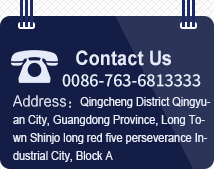

At present, the textile industry is Mired in the "quagmire" of the off-season. According to the monitoring data of Choudu.com, from June 20th to July 11th, the operating rate of key domestic weaving bases continued to decline from 69% to 66%, while the inventory of grey cloth rose to 33.7 days, and the pressure of inventory accumulation was increasing day by day. Against the backdrop of a deep industrial adjustment, the characteristics of the off-season have become increasingly prominent. How to break through the predicament and find new growth poles has become a common issue for the entire industry.
Innovation is the "core code" to break through the deadlock
At present, the textile industry is confronted with the dual challenges of both internal and external troubles. The external global economic recovery is sluggish and the international trade environment is complex. Internally, the industrial scale is approaching saturation and enterprise competition is intensifying. Some weaving enterprises have no choice but to reduce production due to unstable orders.
Wang Jiayi, the president of the China Filament Weaving Association, stated directly that the key to breaking the deadlock lies in "innovation" - enterprises need to expand the market by continuously launching new and high-quality products. However, in reality, many enterprises mistake "following the trend" for innovation and simply "copy and paste" from research and development to production. Although such products are easily accepted by the market in the short term, they will lead to an imbalance between supply and demand: Some enterprises, in order to cut costs, switch to low-end raw materials or simplify processes, which not only damages their own reputation but also disrupts the industry ecosystem.
Therefore, innovation must break away from the mindset of imitation and achieve systematic breakthroughs from product research and development, production processes to business models. Wang Jiayi emphasized: "Enterprises should shift to a 'focus' model, accurately position themselves in niche fields, build distinctive brands, and be aware of market changes without blindly chasing short-term hotspots." "
The off-season is a "catalyst", and industrial upgrading requires "sacrificing the short for the long".
In the current consumer market, personalized and differentiated demands have become mainstream, which poses higher requirements for enterprise R&D: it is necessary to enhance both professionalism and market insight, as well as the agility and forward-looking nature of R&D.
In fact, the off-season is precisely the "catalyst" for industrial upgrading. Whether it is Tutek's technological breakthrough or Yuanquan Silk's precise positioning, both confirm one logic - systematic innovation oriented by market demand. This requires enterprises to be willing to invest in research and development, focus on strategic positioning, and be sensitive to technological iterations.
The off-season will eventually pass, but the deep adjustment of the industry will not stop. Only enterprises that forge core competitiveness through innovation and build solid barriers in niche markets can stand firm and take the lead in the wave of industrial upgrading.
Declaration: The content and template of this article are compiled from the Internet and the copyright belongs to the original author. If there is any infringement, please inform us in time and contact us for deletion.




